
When thinking about art, we often imagine museums, imaginative painters, or a reflection on society. There is a certain flair of sophistication, pomp, and culture. However, when we think about urine, none of those words seem to apply anymore. It's a waste material at best, and something crude and unsettling at worst.
But I think this juxtaposition is what drew me to write about this subject matter. There is a slew of "fine art" created with sometimes unethical ingredients, such as animal urine. On the flip side, there is also some contemporary artwork that openly embraces more blatant, unsavory images for the sake of a passionate political plea.
So let's talk through five examples of how urine has been used in some famous artwork over the last two centuries.
For clarification, I'll be discussing instances where actual urine was used to produce artwork, not instances where the subject matter of a work of art is depicted as urinating. The latter subject is an entire rabbit hole in its own right, so I'll refer you to this article by Alexxa Gotthardt.
But hey, if you haven't been scared away yet, let's get started!
Van Gogh's "Indian Yellow"
Post-Impressionist painter, Vincent Van Gogh is best known for his creation of the painting, The Starry Night (1889), which is one of the most recognizable paintings in the world.
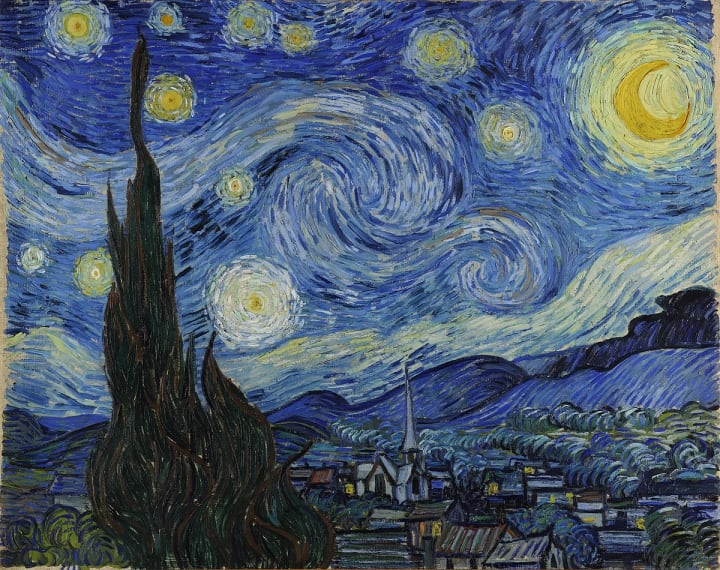
As you can see in the painting above, Van Gogh is famous for his styled, textured approach to painting, and his heavy-handed use of blues and yellows in his painting. However, it's a little less known that the vibrant yellows in Starry Night (and many other paintings) used a special type of yellow paint called Indian Yellow which would eventually be banned from use about 20 years later.
So what is Indian Yellow, and why was it banned?
Indian Yellow was a rich, golden paint that was named after the country where it was produced, India. Although there were many theories as to how the pigment got its color, the matter was finally investigated in 1883. It was found that the pigment was produced from Cow Urine - but not just any cow urine. To get the desired intensity of color, Cows were purposefully dehydrated and fed a diet of only mango leaves. The resulting practice caused painful kidney stones and malnutrition in Cows. The conditions were ruled to be inhumane, and due to the holy status of the cow, Indian Yellow production was banned in the early 1900s.
Van Gogh was not the only artist to use this type of paint, the BBC reported that the now-illegal paint was also used in Johannes Vermeer's "Woman Holding a Balance" (1662-3), Joseph Mallord William Turner's "The Angel Standing in the Sun" (1846), and Joshua Reynold's "The Age of Innocence" (1788).
Source: HowStuffWorks
~
Gustav Klimt's Golden Kiss
Symbolist Painter Gustav Klimt is best known for his depictions of love, intimacy, and sexuality. He is perhaps best known for his stunning oil and gold leaf painting, The Kiss.
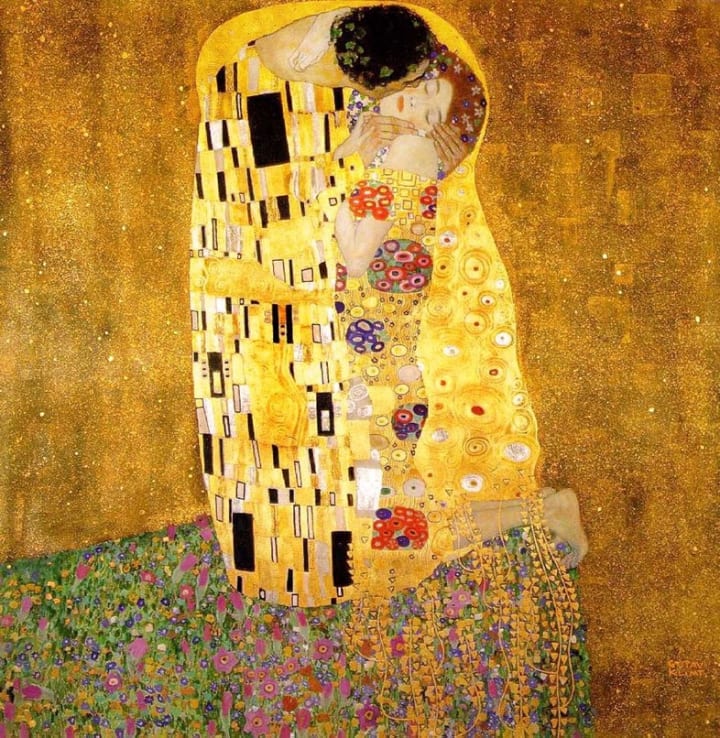
However, Klimt was also known for his love of cats. It's rumored that he had upwards of 8 to 10 cats roaming around him at his artist studios. When questioned about this, Klimt replied, "It doesn’t matter if they crumple or tear a few sheets— they piss on others, and don’t you know, that’s the best fixative.”
This quote has led to a lot of speculation about the drawings and paintings that Klimt has produced. Some rumors suggest that Klimt purposefully used cat urine on his sketchbooks to operate as a fixative for his drawings. Other rumors have suggested that Klimt may have used cat urine in some of his paints. However, it's worth nothing that the details on which artworks may or may not have cat urine have yet to be definitively proven. And regardless, these rumors have not stopped Klimt's works for selling for millions of dollars every time.
Source: Sotheby's and Cultured Magazine
~
Andy Warhol's "Piss Paintings"
Andy Warhol is the poster child of the pop art movement, known best for his vibrant depictions of Cambell's Soup and Marylin Monroe.
However, Warhol dabbled in other schools of art, including abstract art. As part of this venture, Warhol created the "Piss Paintings" and "Oxidation Paintings." Both were created by dispensing urine onto canvases; but the "Piss Paintings used white, primed canvases, while the Oxidation paintings used canvases prepared with metallic powders produced from copper and copper alloys.
Warhol used the corrosive effects of the uric acid in urine to produce a wide range of stains. In this way, the Oxidation series was seen (by Warhol) as an improvement upon the original Piss Paintings, as the addition of the metallic alloys created intricate shifts of color and surfaces of shimmering optical complexity.
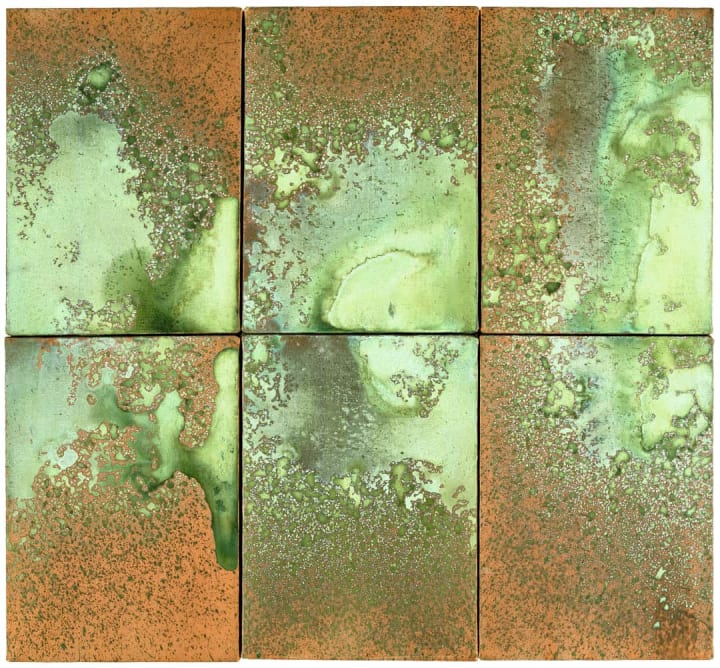
This was not the only... erm... bodily fluid that Warhol used in this foray into abstract art. But that's an entirely different subject matter.
Source: Artspace
~
Recent Examples
Similar to Andy Warhol's Oxidation work, the use of urine in artwork has moved from a practical usage (e.g., paint ingredients) to its own, shock-inducing medium. The distaste of the general public towards such usage of bodily fluids makes it a perfect (albeit a bit bizarre) way to communicate extreme emotions, such as intense anger and dissatisfaction. Such is showcased by our final two list entries today: "Immersion" and "PISSED."
As a heads up - the next two pictures will show the medium in a more "raw" form, so if you are sensitive to viewing these images, feel free to stop reading here!
Immersion
Immersion, also known as "Piss Christ," is an extremely controversial 1987 photograph by American photographer Andres Serrano. The photograph depicts a crucifix completely submerged in a tank full of the artist's urine. Serrano, who is a self-proclaimed Christian, has implied that the work was "not intended to be an over political statement on religion" but also that the work reflects "over-commercialization and cheapening of Christian iconography in contemporary culture."
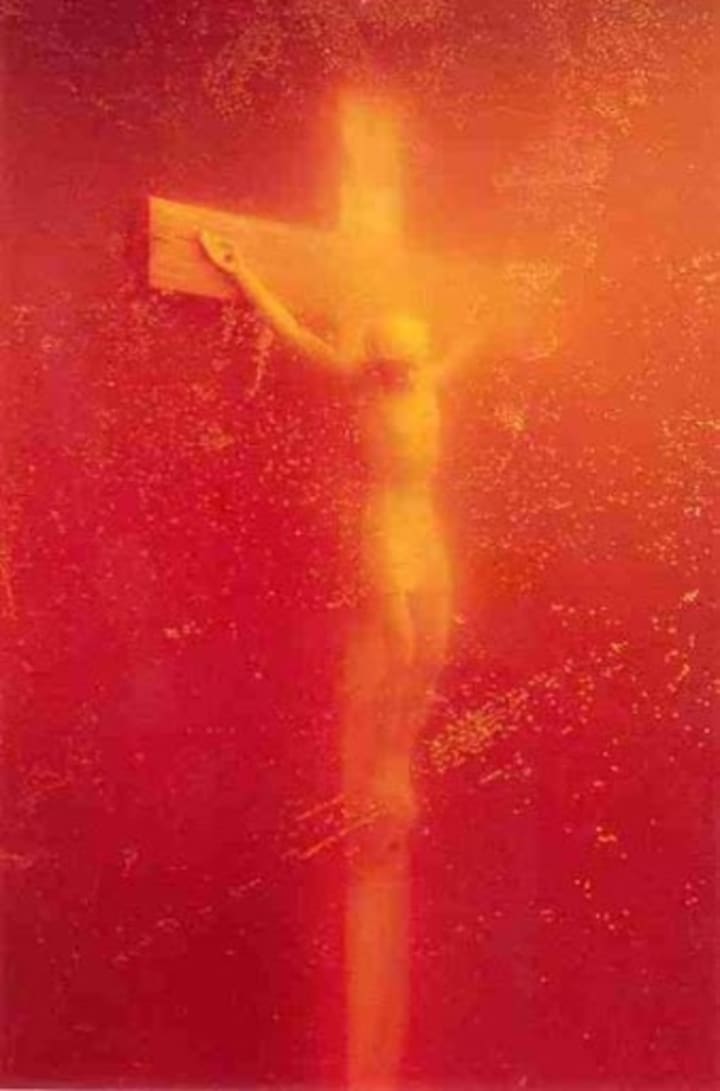
Source: Artland Magazine
PISSED
Our final entry on this list is the work, PISSED. PISSED is an interesting addition because the entirety of the artwork is... you guessed it. PISSED is a protest artwork created by transgender artist Cassils in 2017. The artwork is a glass container filled with 200 gallons of the artist's urine to protest the Trump administration's decision to revoke protections for transgender students to use restrooms in line with their gender identity.
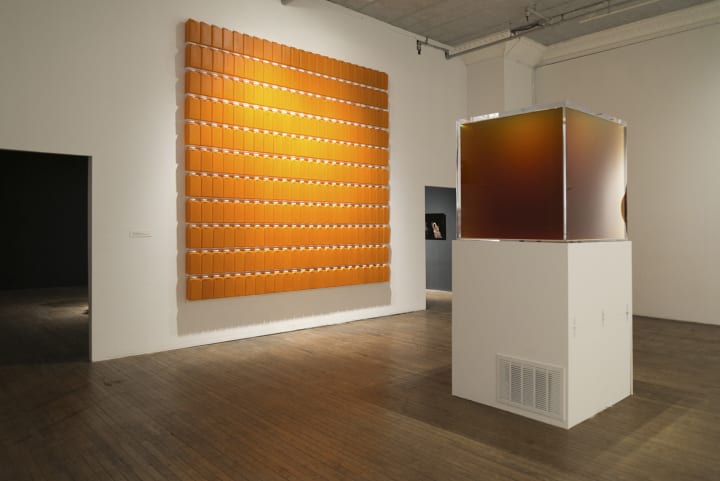
Source: StirWorld
~
Thanks for Reading!
Reader insights
Outstanding
Excellent work. Looking forward to reading more!
Top insights
Excellent storytelling
Original narrative & well developed characters
Eye opening
Niche topic & fresh perspectives
Easy to read and follow
Well-structured & engaging content
On-point and relevant
Writing reflected the title & theme






Comments (4)
Fascinating article. Thanks for sharing. I saw the Starry Night at an exhibition in London a couple of years ago. Keep up the good work
This was a very interesting read!
This was certainly interesting, and well-written. I’m alarmed by how dark that urine is in the last piece of, um… “artwork.” Forget going to a public restroom, the artist should go to the nearest hospital. The oxidation of the Andy Warhol piece is strangely beautiful.
That was a really interesting , really great article thank you